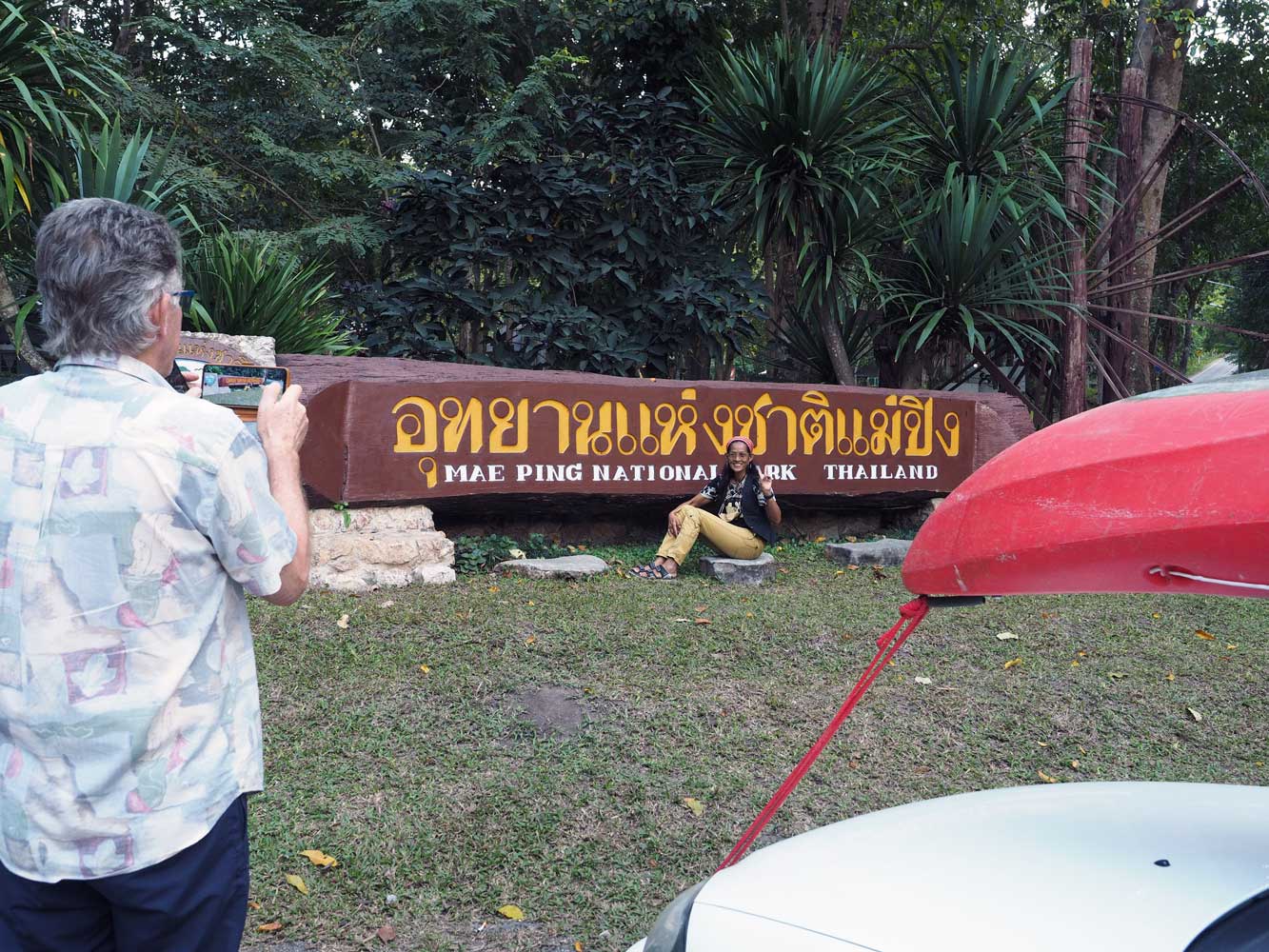
Areeya poses upon our arrival. We will begin kayaking from here tomorrow.
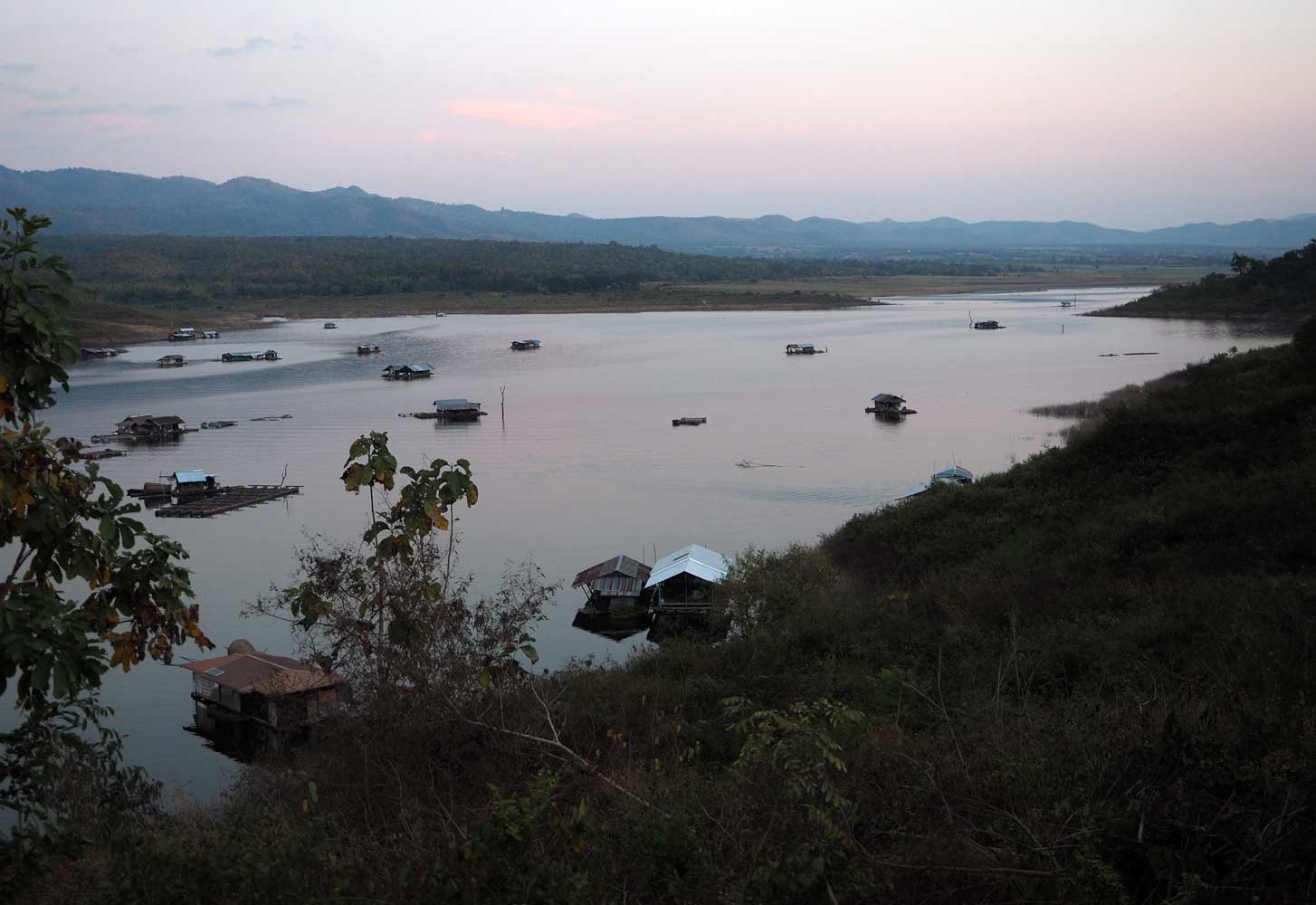
Raft houses upriver dot the Mae Nam Ping.
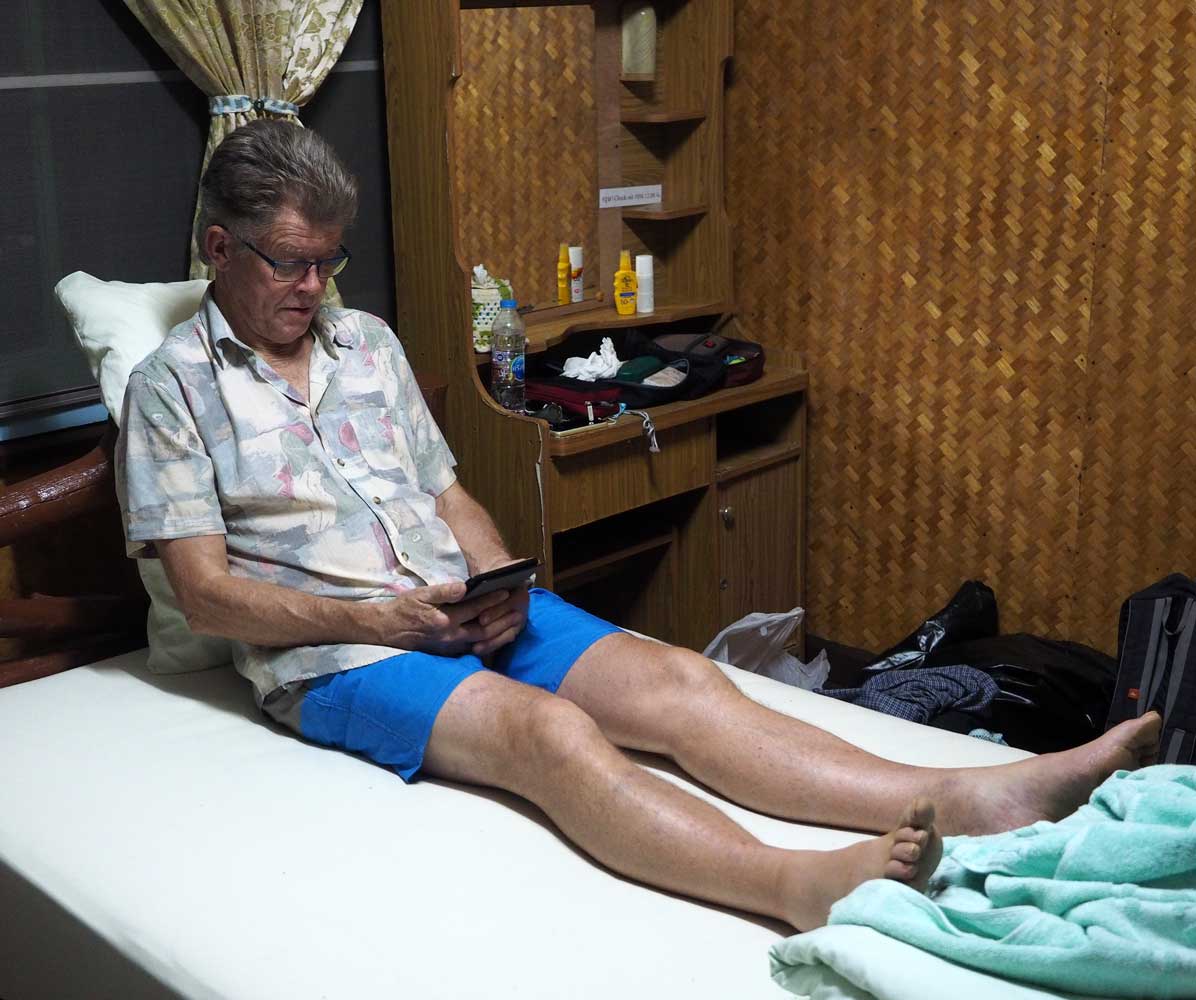
David reads his Kindle before bedtime in our park bungalow room.
|
CONTENTS Days 1 and 2: Arriving at Keng Ko, Mae Ping National
Park, then Kayaking to Raft of Uncle Dten (This page) |
I first heard of Chris Jedrzycki from his cycling stories posted on the
Crazyguyonabike site
https://cgoab.com/Spoke2010 in which he told of cycling challenging routes
way off the beaten path. I got to meet him in 2014 on my first ride to
Kanchanaburi Province. He and his Thai wife Areeya run Hidden Holiday House, a
little guesthouse beside the Tha Chin River near the town of Nakhon Chaisri,
just a day’s ride west of Bangkok; the website
www.hiddenholidayhouse.com/index.php/en/homehhh-en-gb has a description and
even a cyclist’s map of how to get here from Bangkok. I didn’t get to see them
again until the end of my South Thailand ride in 2021, when Chris told me that
he leads informal tours and would be offering a kayak trip on a remote stretch
of the Mae Nam Ping River in January 2022, then a ‘soft-nut’ bicycle tour in
East Thailand the following February. I asked to sign up for both!
The
idea for this tour began with an exploratory kayak trip by Chris in November
2020. He’s always looking for new adventures, and a remote 200-kilometer section
of the river Mae Nam Ping in North Thailand caught his eye. He did this trip
solo by taking an inflatable kayak on a bus to the town of Hot, then paddled
five long days south to Bhumibol Dam. Near the midpoint he passed the last road
access before the dam. He found that dredging
operations marred the northernmost part of river and thought the southern half
the most scenic. So our little group did the latter half from Mae Ping National Park
to Bhumibol Dam
over five days in January 2022. Limestone mountains along the way form
dramatic cliffs at many points and other stretches have picturesque granite
boulders. The Ping River, along with the Nan River farther east, drains much of
northern Thailand, then joins to become the Chao Phraya River in Central Thailand
and flows on through Bangkok and into the Gulf of Thailand.
More people
would have joined our group, but the Omicron variant of Covid-19 had caused the
Thai government to further restrict entry to Thailand. Besides Chris, we had his
wife Areeya (our “Entertainment Director”) along with Iew (a Thai lady), David
(a Brit), and myself (from the U.S.A.). In addition we met up with Jai and Chat,
a Thai couple from Chiang Mai who accompanied us in their little speedboat and
spoiled us with their wonderful cooking! By chance Chris had met them at their
raft holiday home during his 2020 scouting trip and they volunteered to come
along on this trip.
11 January Keng Ko, Mae Ping National Park, Lamphun Province
I got a morning bus from Bangkok north to Thoen, where I met up with the other
kayakers. Chris then drove us in his car the 92 kilometers west through the
hills to the river, where he had reserved a national park bungalow. Because many
of the people living in the remote area along the river had not received
Covid-19 vaccinations, national park staff required all of us to show proof of
vaccination. We dined on Thai food at one of the floating raft restaurants.

Areeya poses upon
our arrival. We will begin kayaking from here tomorrow.

Raft houses upriver
dot the Mae Nam Ping.

David reads his
Kindle before bedtime in our park bungalow room.
12 January Raft of Uncle Dten (19 kilometers paddling)
Chris roused us for an
early start, and we enjoyed an elaborate breakfast of grilled kebabs and fried
eggs. Next Chris set to work to prepare the kayaks and lash our personal gear
atop them.
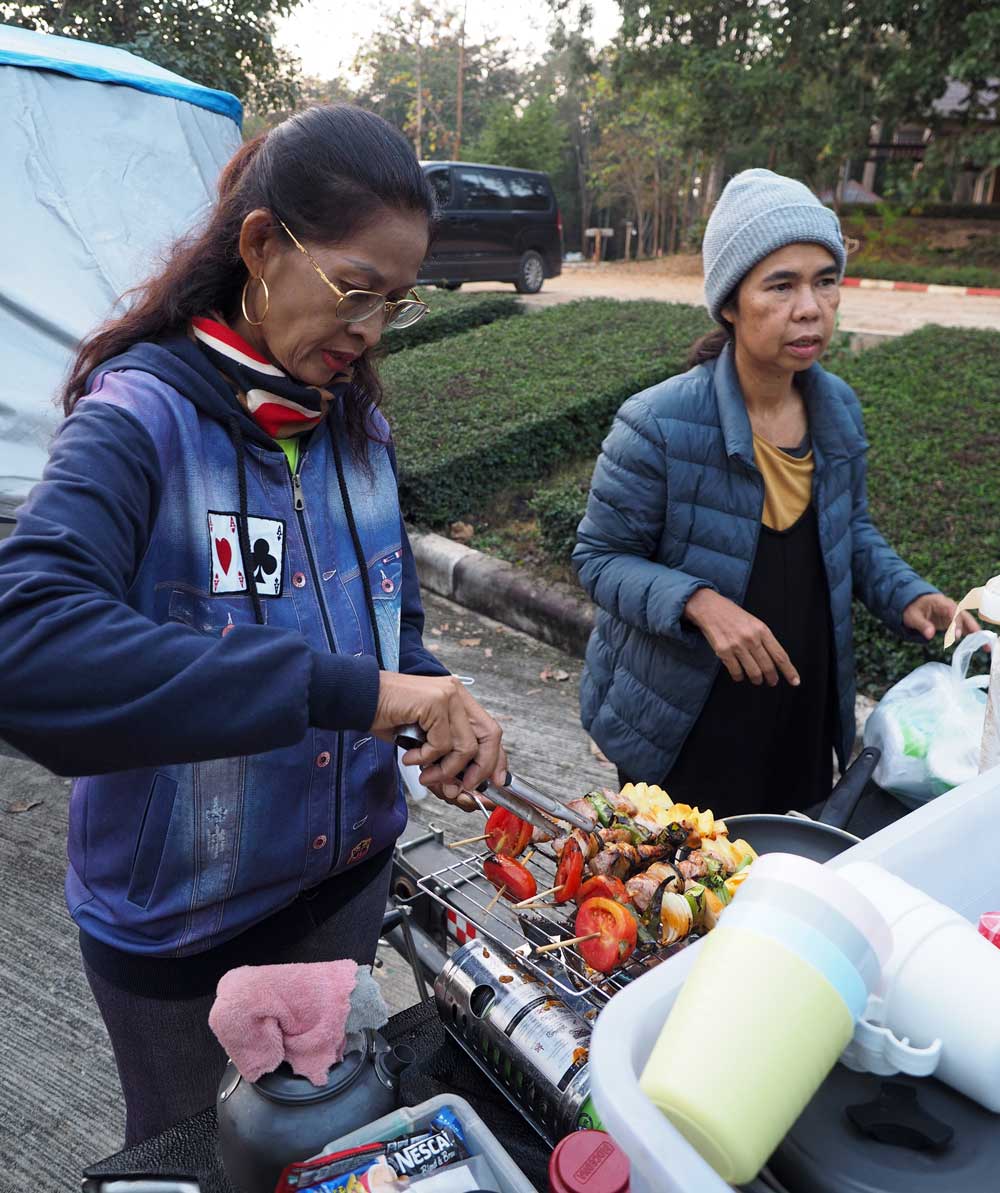
Areeya and Jai fix
our fancy breakfast.
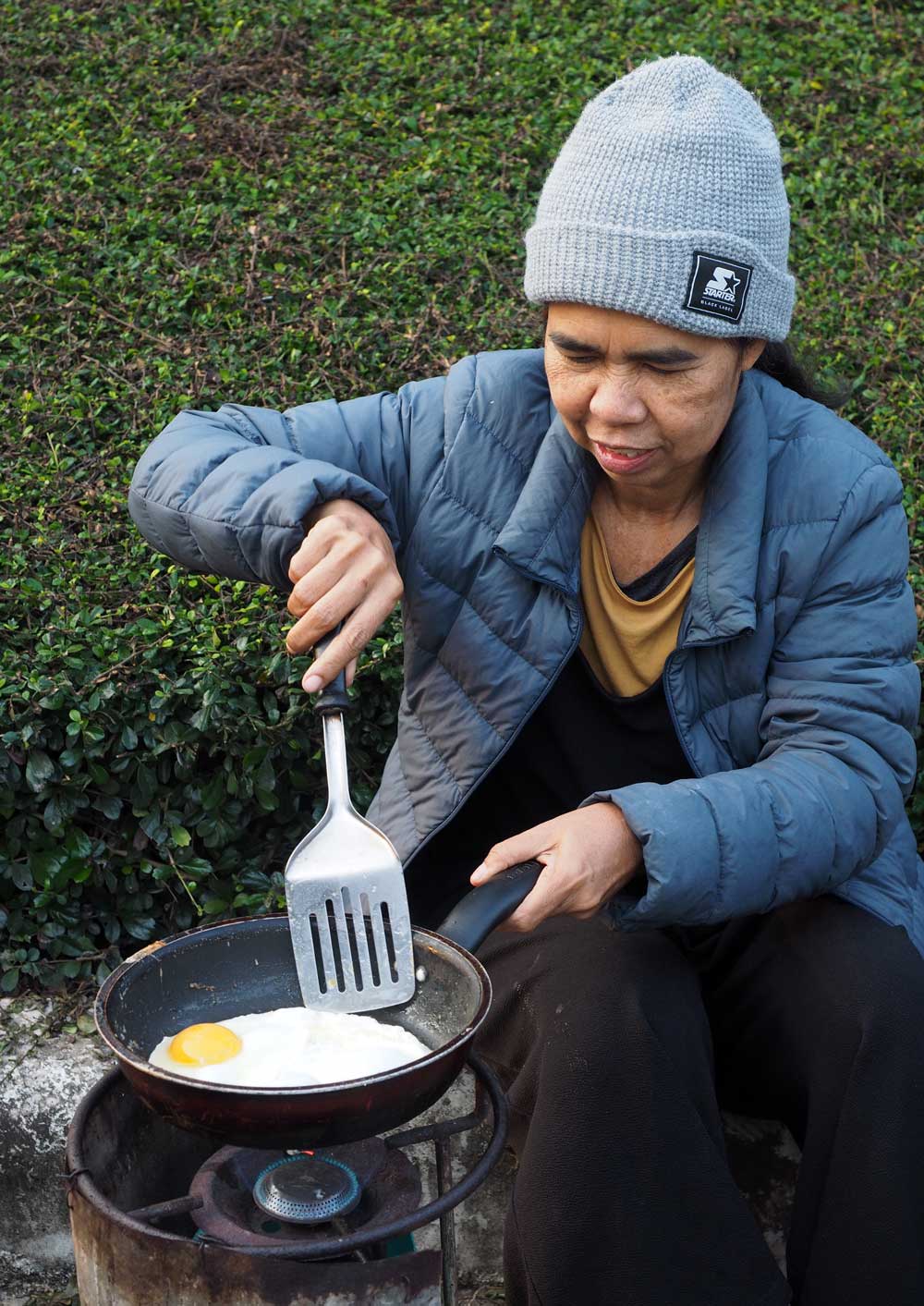
Jai whips up some
fried eggs.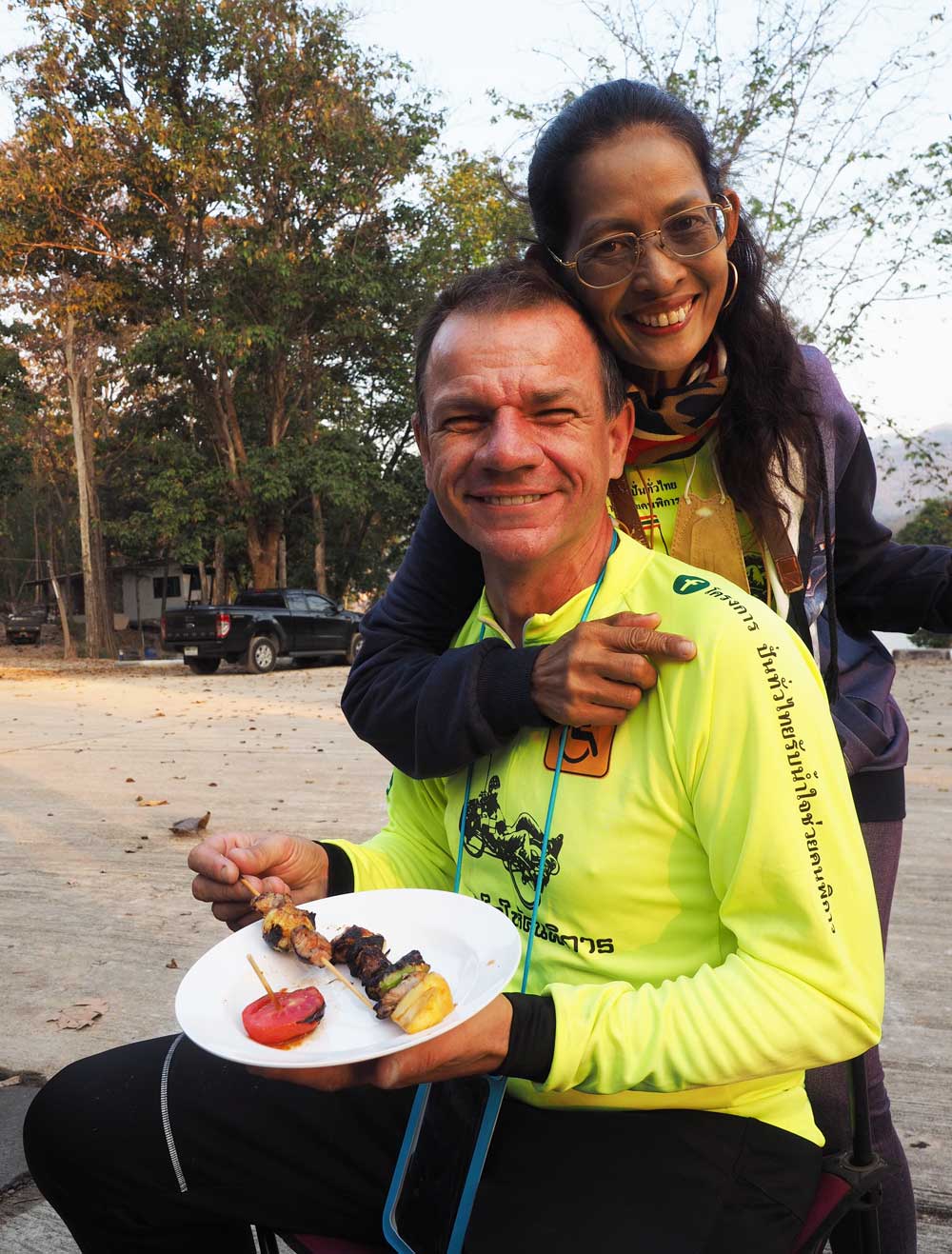
Areeya cheers up Chris with a hug.
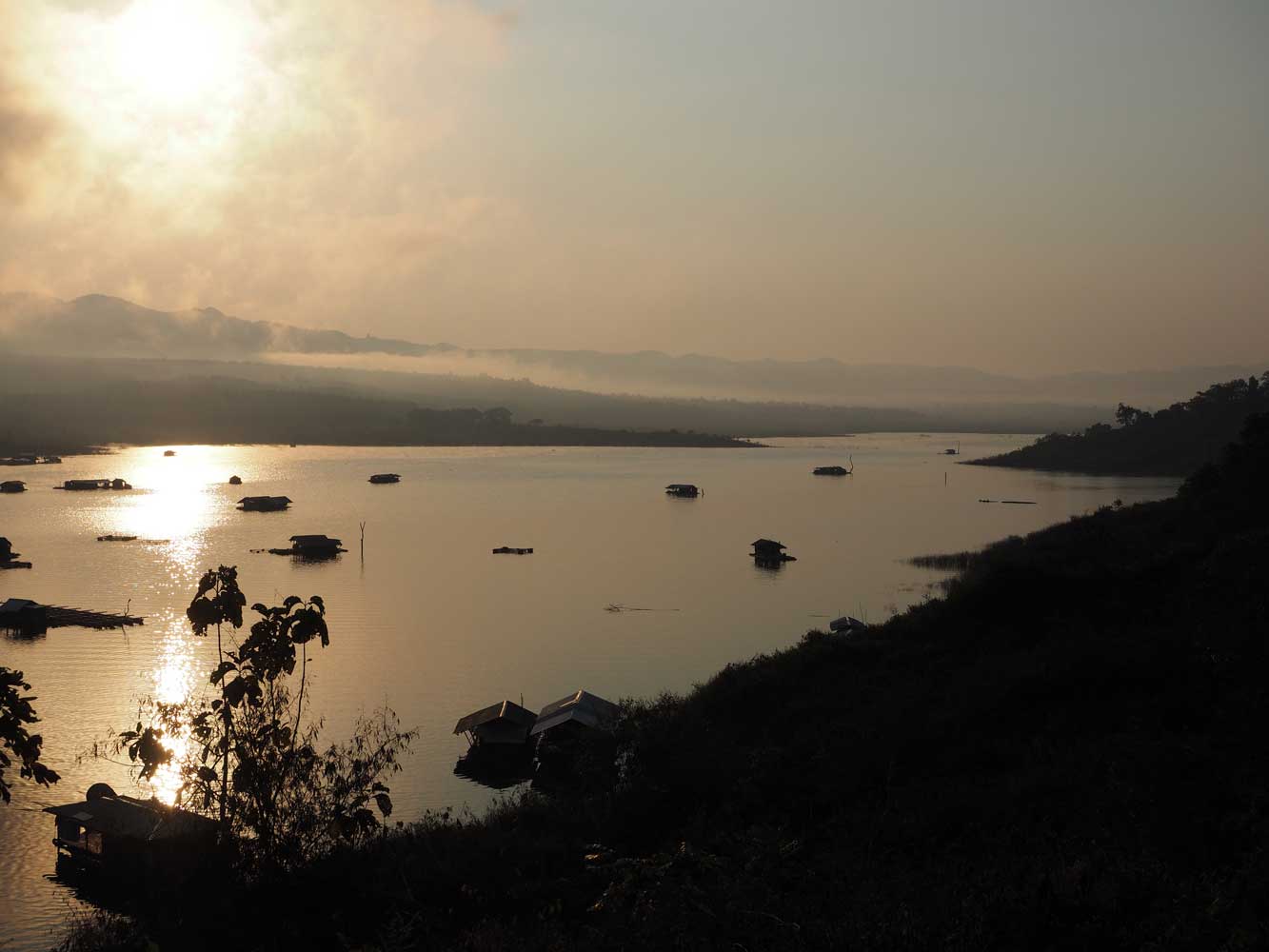
A bit of cloud
diffuses the early morning sun.
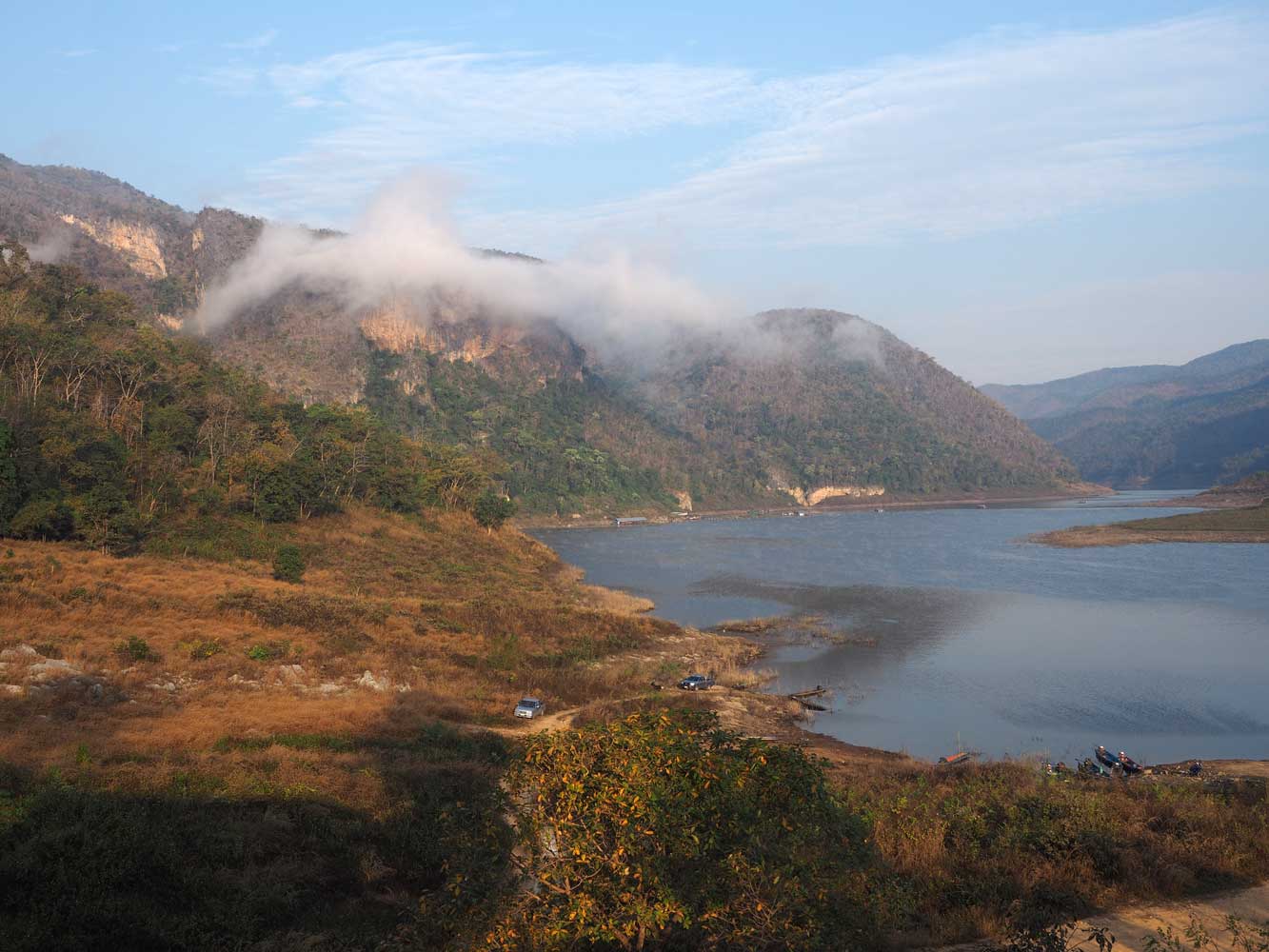
We launch from the
shore on the lower right.

Chris secures our
dry bags atop the kayaks.
We had two inflatable kayaks and a sit-on-top polyethylene kayak, all with
back rests for support. We found the inflatable kayaks to be a bit more comfy
and stable, but noticeably slower due to their extra width. With just five of
us, that meant one kayak would be paddled solo, so today David started out in
the fiber kayak. I took the rear seat in an inflatable with Areeya in the
front. Our entire trip would be on the Bhumibol Reservoir of the Mae Nam Ping, so
we didn’t have any whitewater to worry about nor current to push us along. My
only previous kayak tour had been in Glacier Bay of Alaska back in 1994, and I
had done a bit of kayaking in South Thailand last year, so I wasn’t surprised to
find my arm muscles out of shape. Nearing the end of the day my arms felt so
tired it seemed they might fall off, but Areeya reassured me that if that
happened she would get some string to tie them back on.
Mountains with
steep hillsides towered high above on both sides of the river for our entire
trip, making landing on shore difficult in most places. Villagers—who rely on
fishing for both food and income—have adapted by living on rafts and even
cultivating gardens and banana plants on rafts. This also made moving house
easy—just hire a motorboat for a tow. Some house rafts lay kilometers from their
nearest neighbor while others clustered together to form villages. Villagers
also run cattle on the rugged hillsides, and we often heard the tinkling of
bells. We saw rafts of hay passing by to supplement the meager grazing, while
other rafts carried cattle to market. Party rafts
also travel this section of reservoir, typically a raft with guest rooms tied to
an open-sided raft for dining and dancing. One of these pairs pulled in just
before we set off. First we paddled southwest through a narrow section, then
south into a wide valley with bays where tributaries entered.
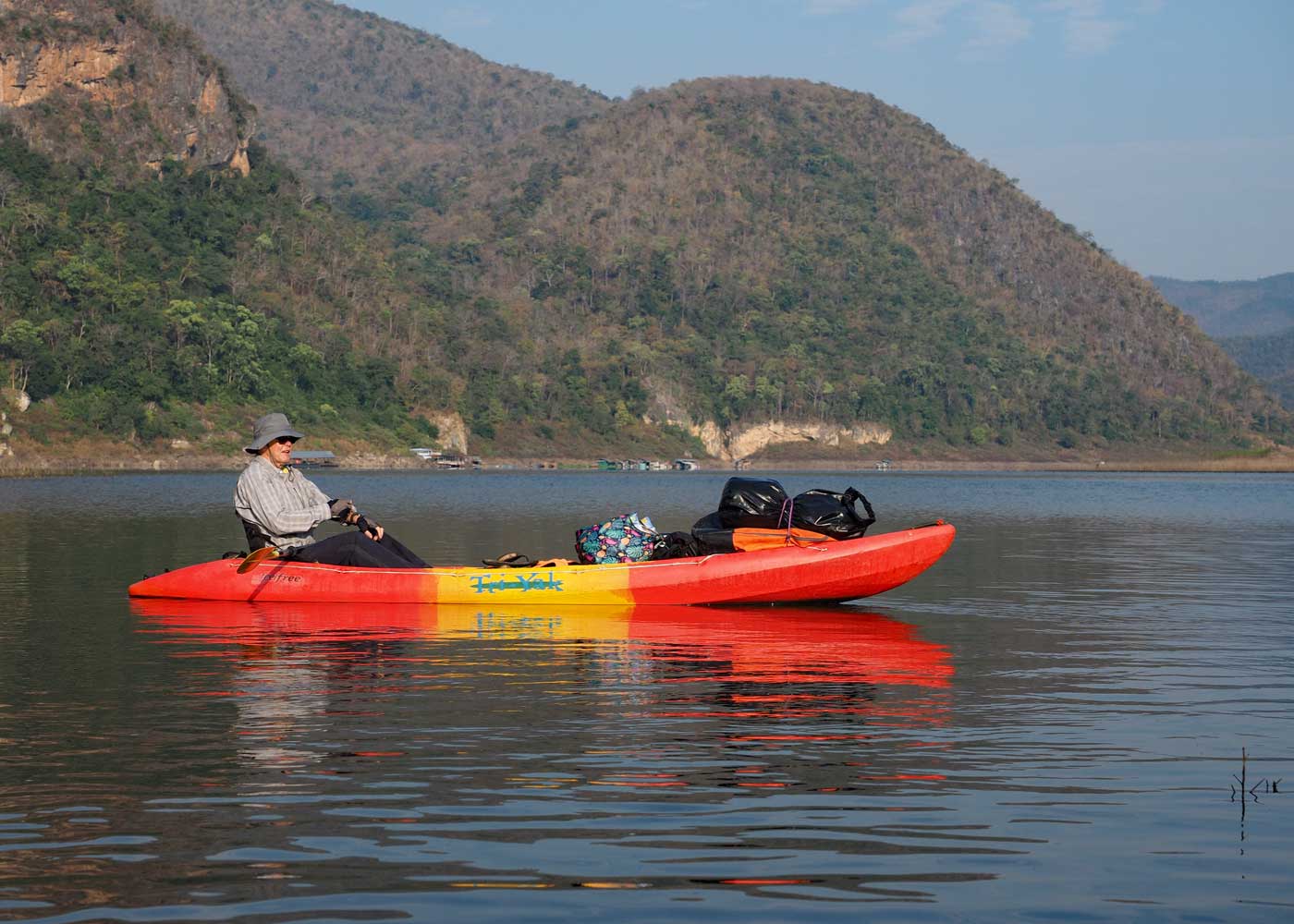
David admires the
scenery after we push off on this bright sunny day.

We feel very small.

Twists and
turns of the valley give us shady spots now and then.
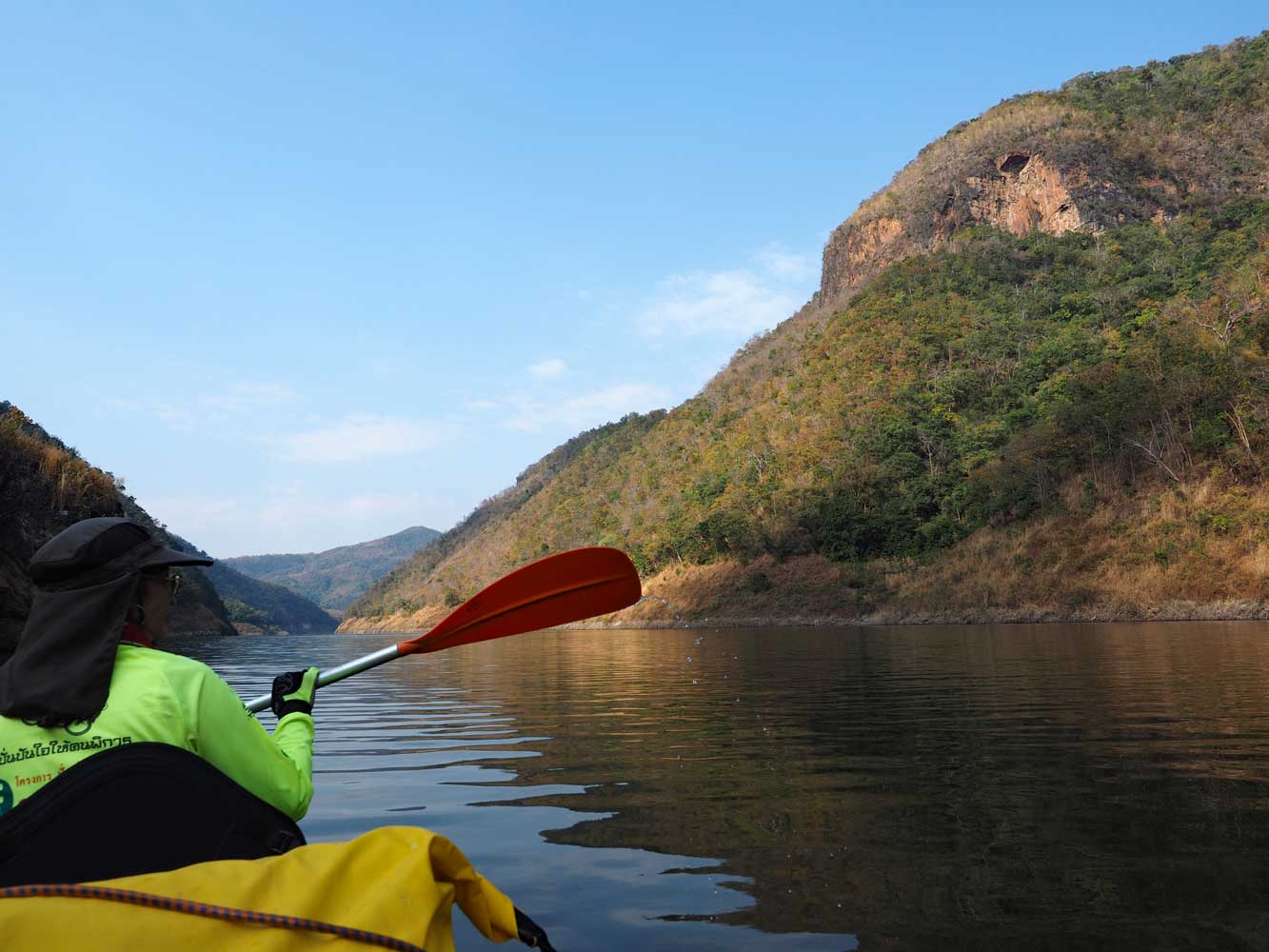
Areeya paddles
while I play with the camera.
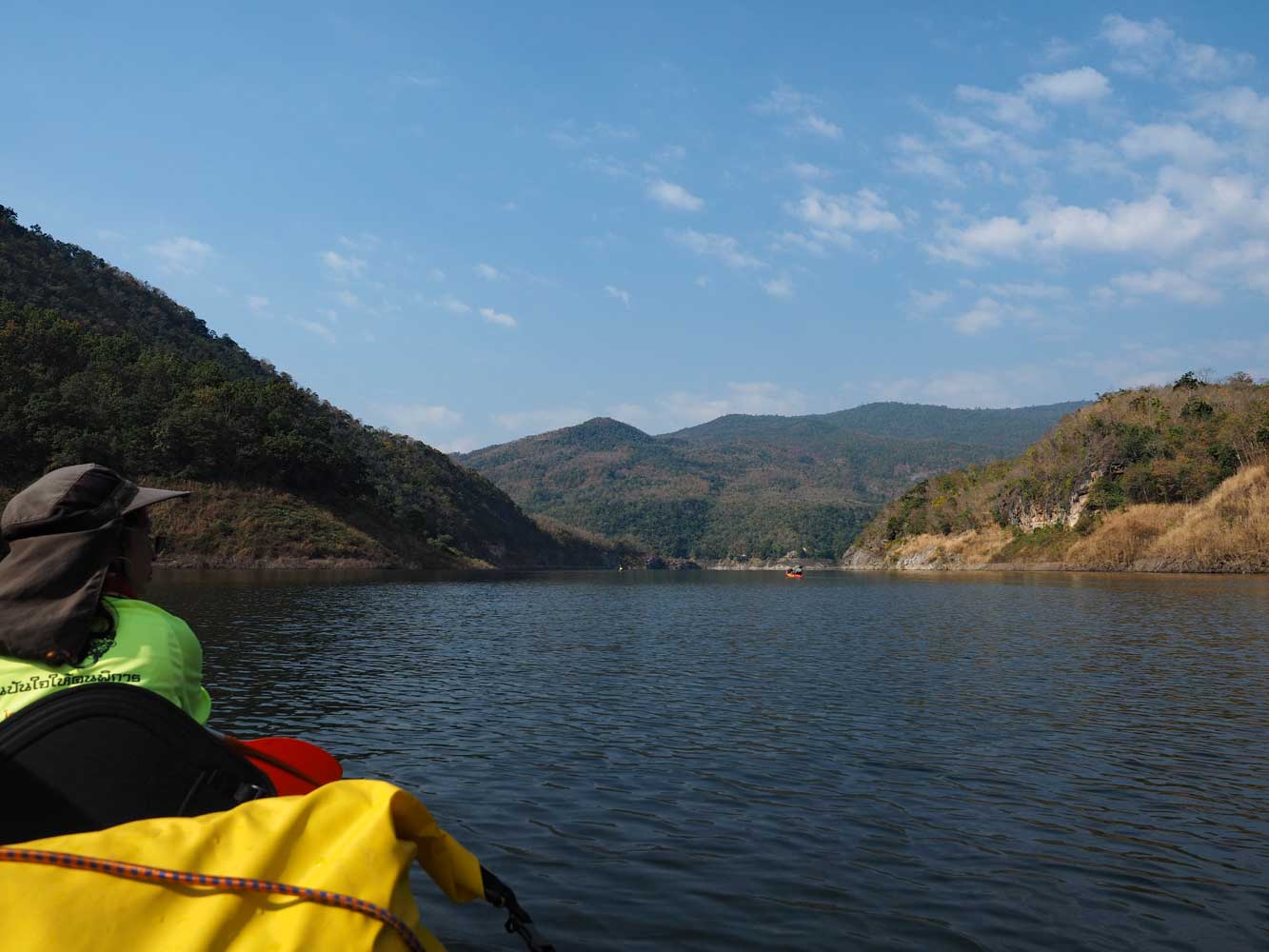
Another of the
every-changing views
Jai and Chat met us for lunch at a floating raft, where a steep path led up to a park ranger station and fine views of the river. Afterward we crossed to the far shore to visit Ban Ko Jadsan School, an elementary school on a raft that normally has five boys and one girl with one teacher, but due to the Omicron situation they had all gone home. A caretaker showed us around the well-cared-for building. Back in the kayaks we continued south to a primitive guest house raft, where we got individual rooms furnished solely with a mat on the floor. Curiously this raft had a wheelhouse on top, but the engine and steering gear had long disappeared. I jumped into the murky green water—pleasantly warm—for a wash. The toilet is also in the back as the river is “all purpose.” Jai and Chat fixed a tasty Thai dinner for us, then motored to a nearby spot to sleep atop their boat for the night.
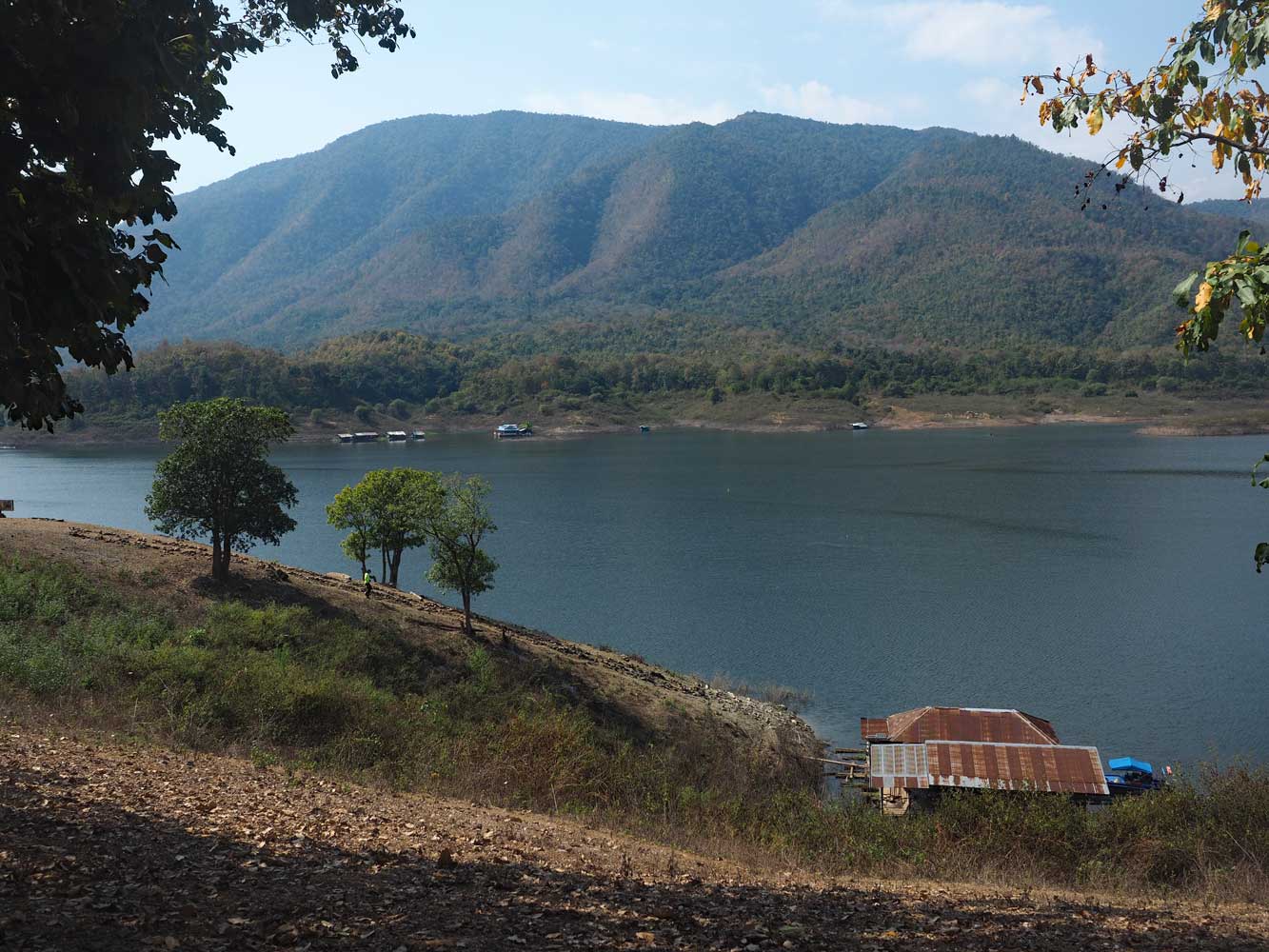
In this view from
the ranger station you can see the raft below where we had lunch, and the
blue-topped boat of Jai and Chat. Across the water the blue-roofed building
center left is the school.

Iew joins David for
the afternoon paddle.

A floating garden
beside a house raft

Brush grows along
much of the gentler parts of the shoreline, making landing a challenge.
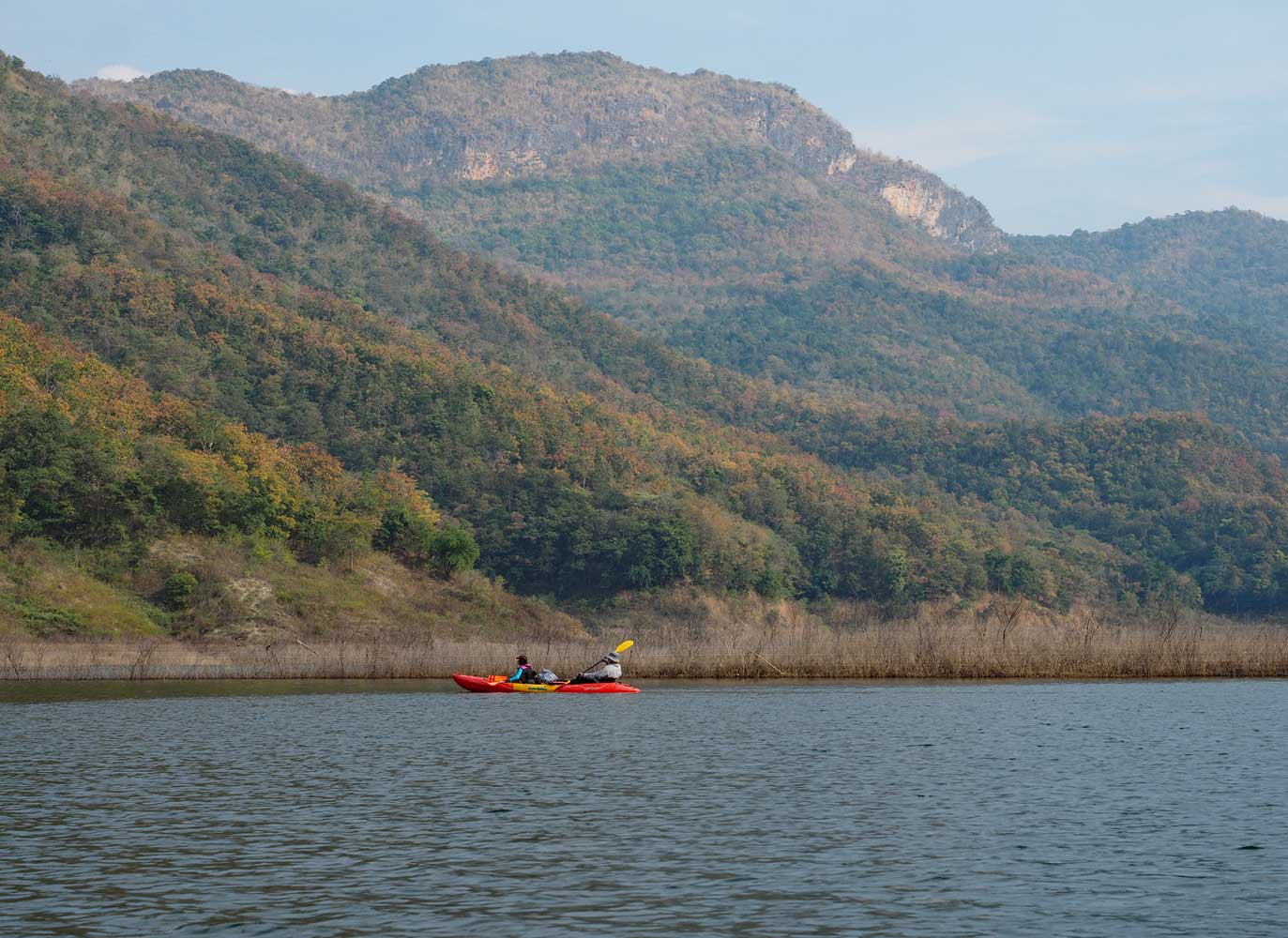
Iew and David take
in the grand scenery.
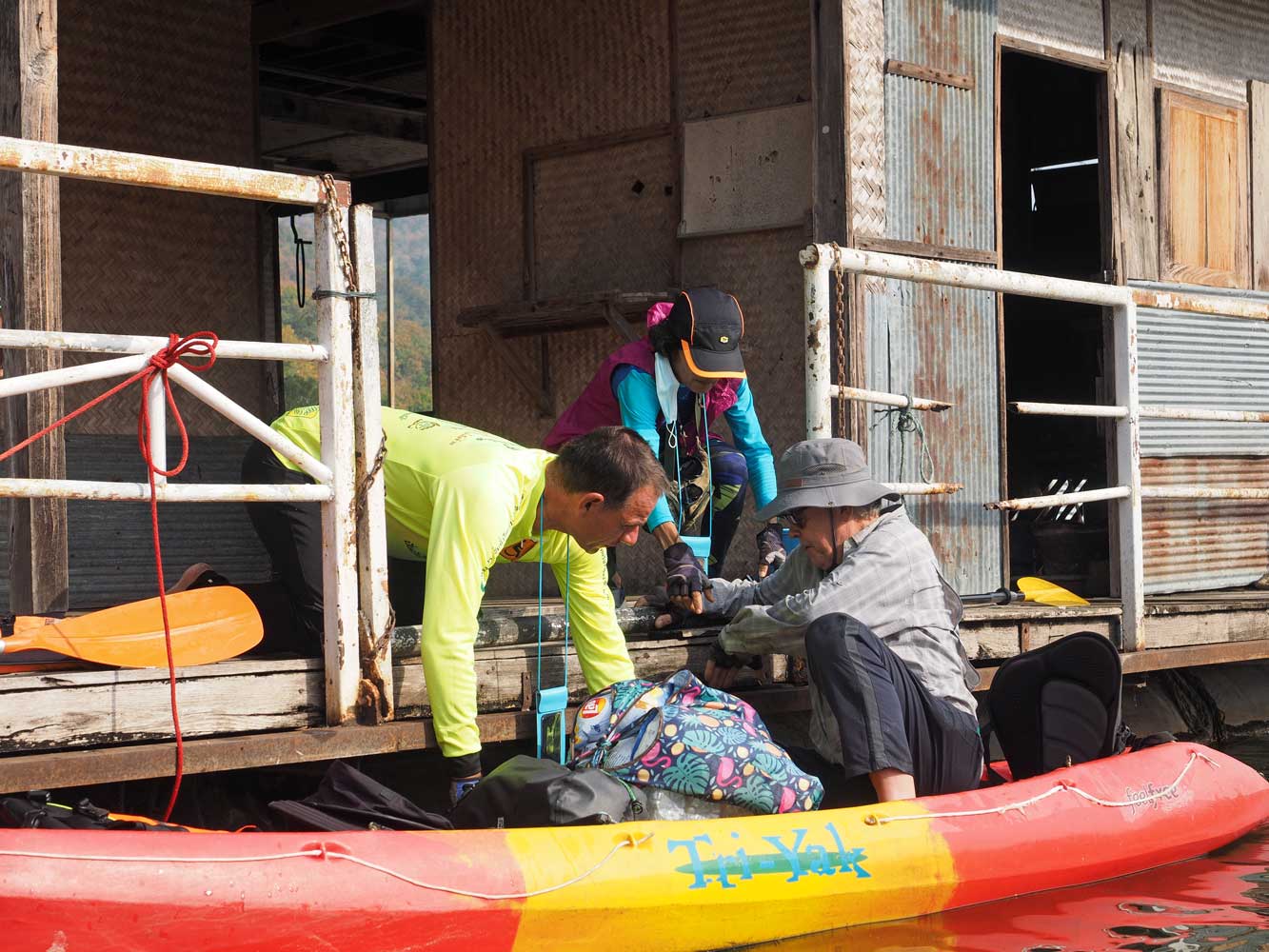
Getting in and out
of the kayaks is the most risky part of kayaking! Luckily nobody on our trip
fell overboard.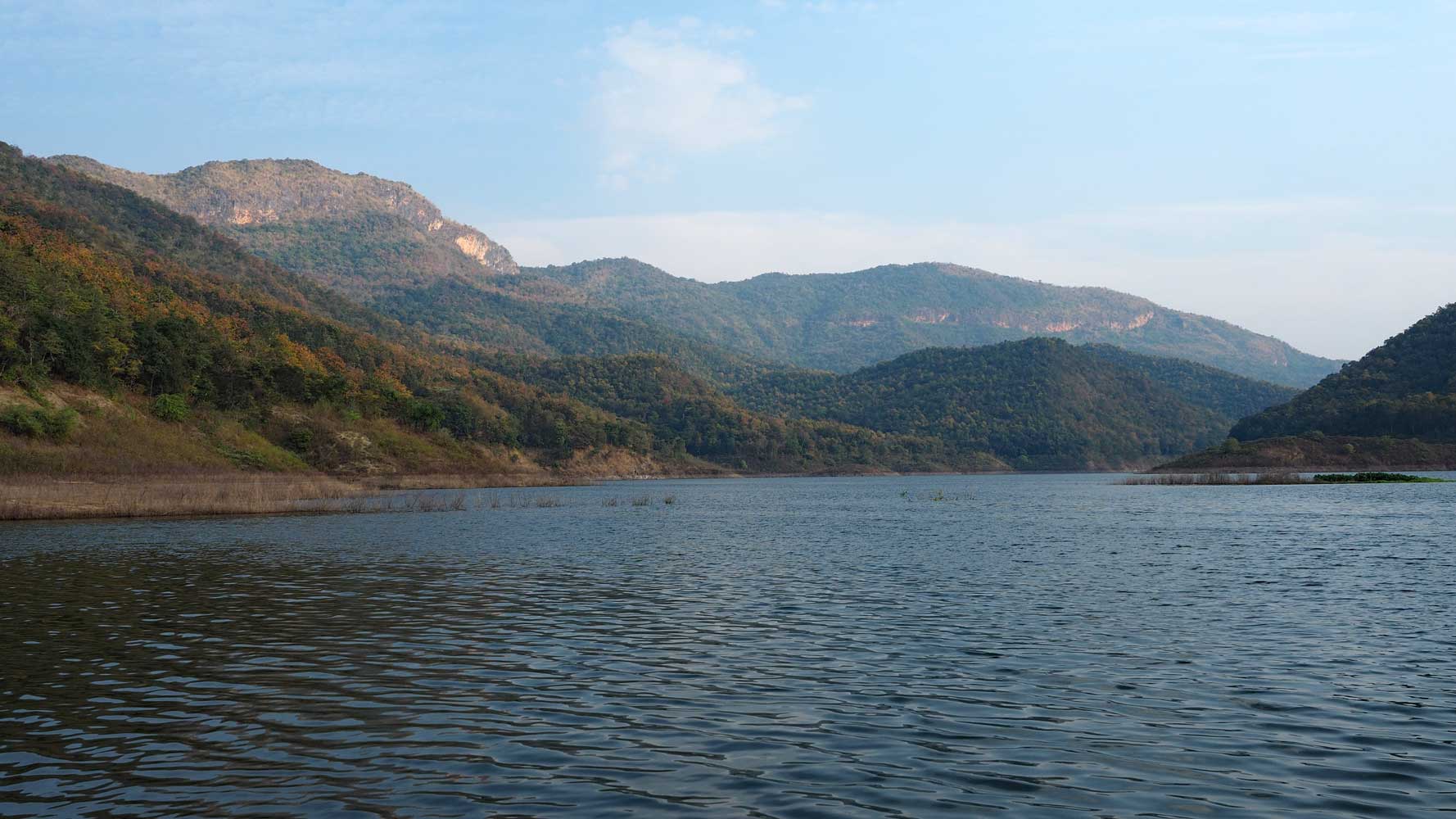
View downriver from the raft of Uncle Dten, where we spent our first night on
the water.
Areeya tends to a scrape on David’s arm. You can see a cattle pen in the
background.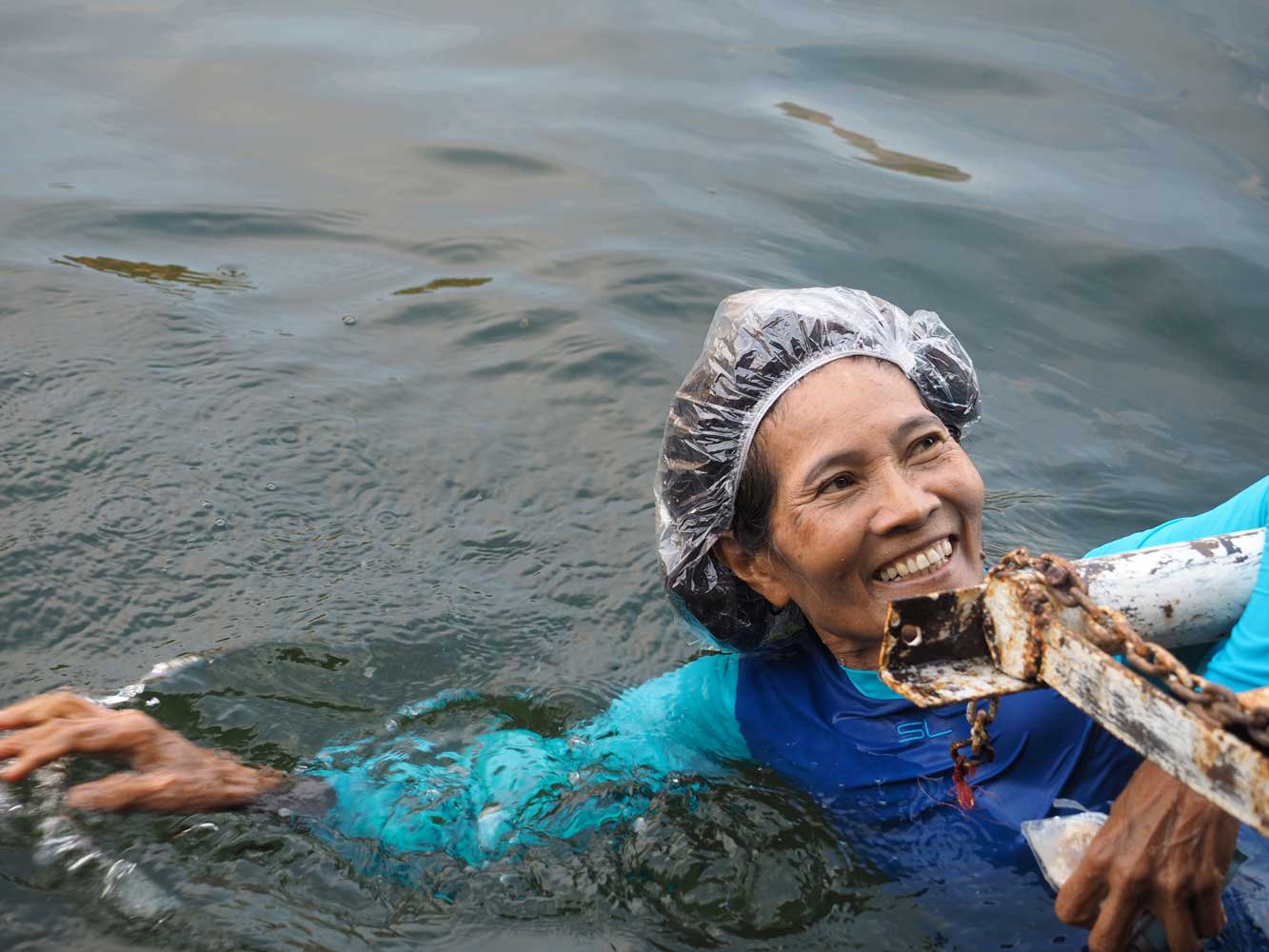
Iew and I went swimming.

Jai fixes dinner

With help from
Chat.